
By Bette Kiernan and Bart Anderson
The San Francisco Ballet treated Stanford audiences to an intriguing dance program, Starry Nights, under the stars at Frost Amphitheater last week.
Two major pieces book ended the evening. First was a striking new ballet set to Stravinskyś Violin Concerto by resident choreographer, Yuri Possokhov. Lastly was MADCAP, a surrealistic piece featuring a clown and his dreams, by Danielle Rowe. The night was rounded off by four shorter pieces from recent SF Ballet galas.
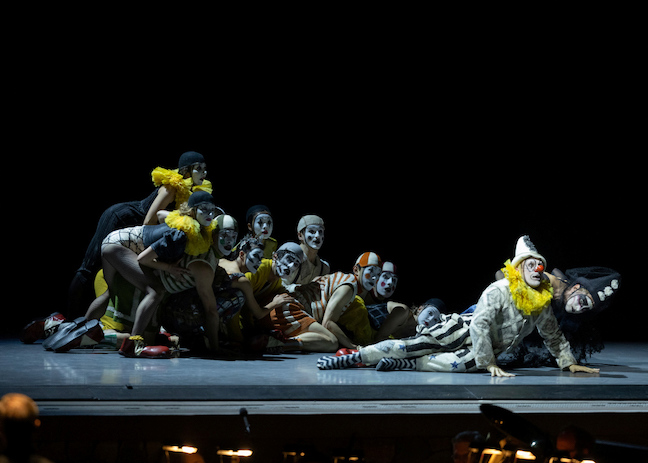
MADCAP and the Stravinsky ballet will be performed again in San Francisco April 2-13, 2024.
The amphitheater setting was perfect for pieces that draw upon the unconscious mind. As the twilight turned to night, the skyline was silhouetted by trees that swayed with the wind. They seemed to mirror the on-stage ballerinas and danseurs as they performed grand jetés and pirouettes.
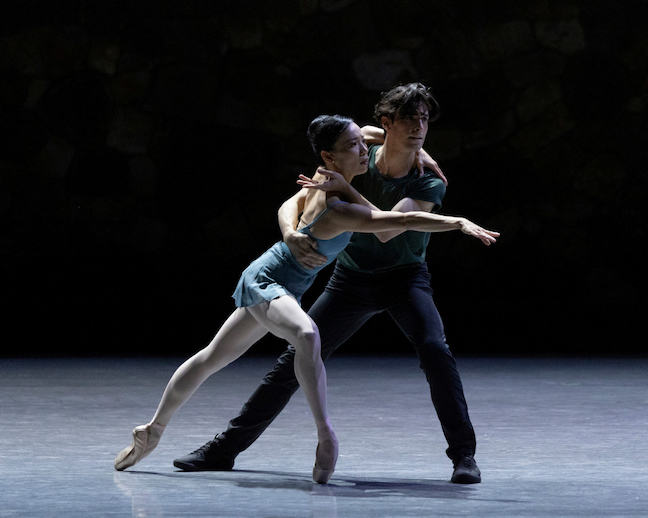
The mood was less formal than usual at ballet performances. Some children were there, and a concession stand served food and drinks outside the amphitheater. The near capacity crowd was relaxed but attentive, applauding the bravura dance sequences.
A New Imagining of a Classic
SF Ballet’s choreographer in residence, Yuri Possokhov, had a new vision for Stravinsky’s 1931 classic Violin Concerto. The famous George Balanchine choreographed the piece in 1972, and and is one of Balanchine’s most widely known masterpieces. Possokhov himself has performed in it.
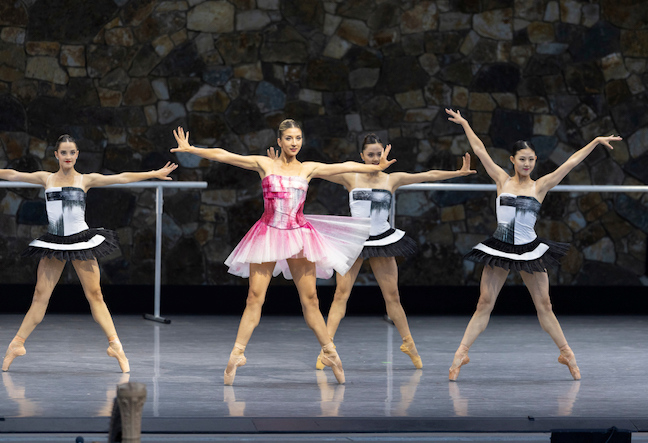
“There is no connection between his ballet and my ballet — I couldn’t do Balanchine; impossible,” Possokhov said in a video released by the Ballet.
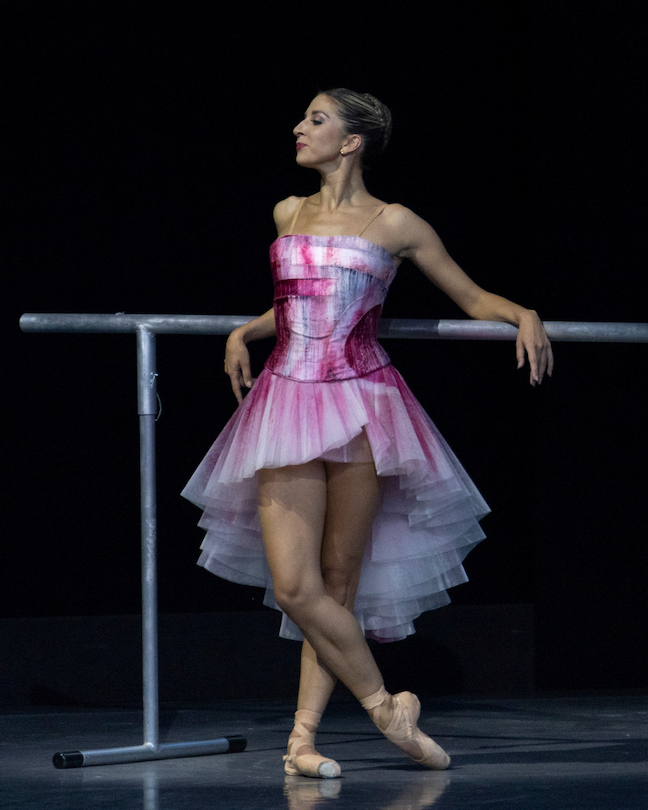
Possokhov’s work operates on several different levels. Stark black and white costumes donned by the ensemble contrasted sharply with the flamboyant pink, white and red tutu worn by lead female dancer Sasha Mukhamedov.
In an SF Ballet interview, Mukhamedov identified her role as “The Muse,¨ leading the rest of the dancers. She felt she represented imagination: “What could possibly happen?”, “What else is out there?” She noted that the others are dressed in black and white, like the notes in a score and she was the red pen. She said she might be “creating a little havoc or trying to inspire [the others.]”
The mythic theme of the outcast emphasizes the dual nature in tales about a deviant. The dazzling ballerina in pink is an outcast.
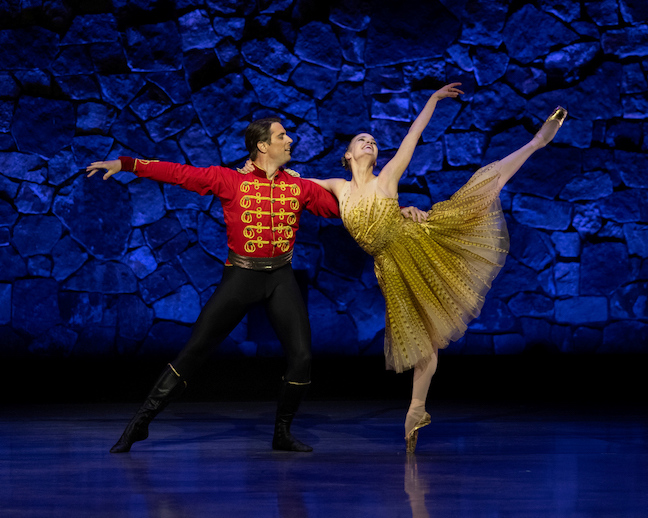
The larger assemblage repeatedly prevents her from joining their dance. Her movements are unlike theirs so that she creates dissonance with her presence. Her loneliness and despair manifest in the sadness of the main pas de deux with a male member of the ensemble. Stravinsky’s music becomes discordant when the flamboyant ballerina enters the stage, underscoring the power in her divergent role.

The motif is a familiar one in fairy tales. Like the Ugly Duckling who is initially abused but becomes most prized by the end of the story, the lead dancer in Possokhov’s ballet also becomes acclaimed by the other dancers and the audiences by the end of the tale. Given Possokhov’s Russian heritage with its rich fairy tale history, it is not surprising that archetypal themes are deeply woven into his work.
The work conveys an underlying pattern of group dynamics. A different individual becomes a negative group focus. Violence against a deviant other or scapegoat regularly takes place. The cruel pecking order maintains a cohesive society. Without the different Other, the group might become discordant and unstable. By depicting the evil nature of society Possokhov, through beauty’s lens shows us a dark side of ourselves. In addition to being the creative force who ushers in the New, a different one may sacrifice him or herself for the benefit of the group. Possokov’s ballet gives the traditional story a twist by having the prima ballerina attain the goal of reaching her potential as dancer and force for change.
MADCAP – a Macabre and Humorous Trip Through the Unconscious
Dani Rowe’s MADCAP also taps into myth, as she takes a clown on an eerie dream voyage. A shaman (Luella Gren) guides him into encounters with figures in bizarre costumes. She is not a nurturing mother figure!
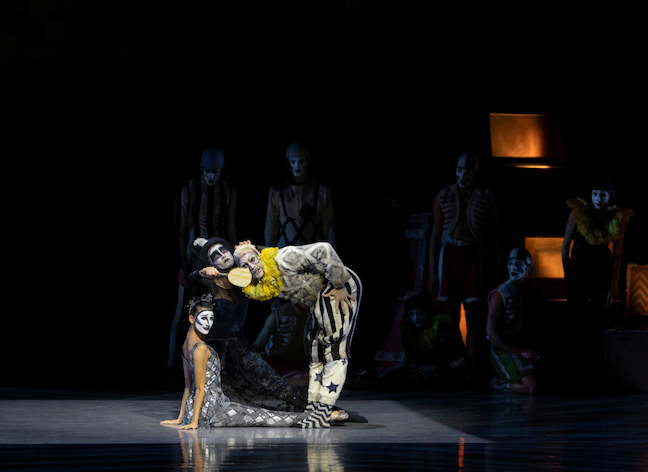
The varied characters seem to represent the different energies of the archetypes held in the unconscious. They might be the usually hidden aspects of oneself. Some sparkle; some laugh and make interesting vocalizations. Some movements are grounded and connected to the earth while others are twitch-like, solitary or in connection with others. They evoke Halloween or Swiss Festivals such as the Evolene Carnival in which masked figures wear animal skins and chase away bad spirits.
Rowe’s ballet fills a psychological function for audience goers by making the shadow sides of us visible and thereby gifting us greater personal freedom to express all the aspects of ourselves.
All in all, an enchanting evening with themes that touch deeply.



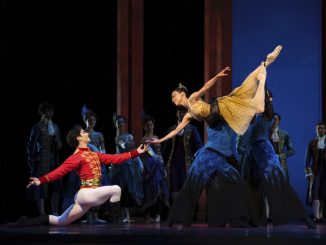
Be the first to comment